 Cousins, there’s been a breakthrough in DNA research toward identifying Zachariah Dutton’s paternal ancestry. Y-DNA research has uncovered evidence that Zachariah’s father may have been an O’Caine, of the same family as Judith O’Caine who married Matthew Dutton of Charles County, Maryland. This is still a speculation and not proof, but it is a significant advance over what we knew before. Here is an account of how we’ve come to this conclusion. Let me begin by giving a brief overview of the science involved in this discovery, and then the background of the research leading up to it. Finally, I will relate the recent developments that brought us to this discovery.
Cousins, there’s been a breakthrough in DNA research toward identifying Zachariah Dutton’s paternal ancestry. Y-DNA research has uncovered evidence that Zachariah’s father may have been an O’Caine, of the same family as Judith O’Caine who married Matthew Dutton of Charles County, Maryland. This is still a speculation and not proof, but it is a significant advance over what we knew before. Here is an account of how we’ve come to this conclusion. Let me begin by giving a brief overview of the science involved in this discovery, and then the background of the research leading up to it. Finally, I will relate the recent developments that brought us to this discovery.
Background
Overview of Y-DNA Research
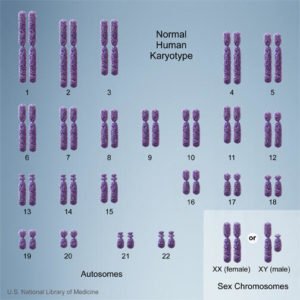
Y-DNA is the DNA on the Y-chromosome, the sex chromosome that only males have. Sex chromosomes are the pair of chromosomes that all people have that determine their sex: Males have a Y-chromosome and an X-chromosome, while females have two X-chromosomes. When a child is conceived, a female receives an X-chromosome from both her mother and father, while a male receives an X-chromosome from his mother and his father’s Y-chromosome. This Y-chromosome — since the father received the same Y-chromosome from his father, and the grandfather from his father — is passed down mostly unchanged from father to son, and has been for millennia.
Because the Y-chromosome is passed down mostly intact, the Y-chromosome of a direct male patrilineal descendant of Zachariah Dutton (that is, through only the line of Dutton fathers to sons; his name will likely be Dutton) has the same Y-chromosome that Zachariah himself had — and that Zachariah also received from his father. We do not know who Zachariah’s father was, only that he was not a Dutton, since his Y-chromosome does not match the Y-chromosome of Mike Dutton or other patrilineal descendants of the Duttons of Charles County, Maryland. So identifying who else shares Zachariah’s Y-chromosome is a crucial task in discovering who his father was.
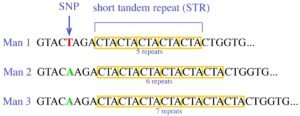
I said the Y-chromosome is passed down mostly intact. There is a type of common mutation called a short tandem repeat (STR) polymorphism, in which a sequence of repeating genes, in a section of DNA that does not actually code for anything useful but instead acts a place-marker, changes the number of times it repeats from a father to son. In the tables of genetic markers we view for Y-DNA, the numbers in each column are the Y-STRs. The fact that some patrilineal descendants of Zachariah Dutton have different values for some of these STRs indicates that there have been STR polymorphisms in the line. This mutation is not a cause for alarm: it is harmless. The mutation is random, but statistically, we can predict a small chance of an STR polymorphism at a given STR marker in each generation — and based on these statistics, estimate the number of generations that have passed between a descendant and an ancestor.
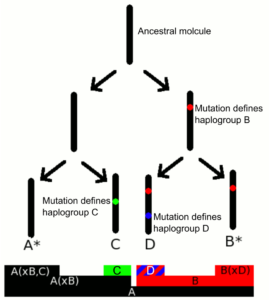
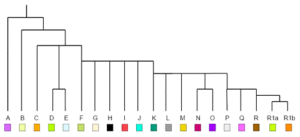
There is another type of DNA mutation that we pay attention to in Y-DNA research, called a single-nucleotide polymorphism (SNP, pronounced snip). This is a change in a gene in DNA that should not change. This is also random, but exceedingly rare, occurring only once in several thousand years. When a SNP occurs, an ancestor passes the same mutation to all his descendants — such that when a man tests positive for a particular SNP, he is almost certainly a descendant of the originating ancestor. Of course, this ancestor lived many thousands of years ago and no one knows his name, so this is not useful in itself genealogically; but the fact that only descendants of particular patrilineal lines have a given SNP means that we can classify all males into categories, called haplogroups, based on their SNPs. We can exclude men as sharing the same patrilineal line, or verify that they do, based on whether they share the same Y-SNPs and are members of the same haplogroup.
And that’s where this new progress in understanding Zachariah Dutton’s paternal ancestry comes in.
Zachariah Dutton’s Haplogroup
Because a Y-SNP proceeds from an ancestor to all his descendants, and because SNPs keep occurring over time, SNPs form a “family tree” or haplotree. One of our first discoveries about Zachariah Dutton’s paternal ancestry is that he falls into the haplogroup E1b1b1 (E-M35), a population group originating in ancient times in northern Africa, eastern Europe, and the Middle East. The fact that his Y-chromosome descends from this group means only that he had an ancestor in prehistoric times who lived in those places, not necessarily that any such ancestor came from that part of the world within a genealogical timeframe. This is in contrast to the most predominant haplogroup of western Europeans, R1b (R-M343) including the other Duttons of Charles County, Maryland, who presumably descended from English Duttons.
One of our Y-testers, Paul Dutton, had an additional test to his DNA done to determine the specific subclade of Zachariah’s Y-chromosome. This test revealed he was haplogroup E-M78, a subclade of E-V68. For about ten years, this was where we left it. We had no family to even try to connect to, not even a direction to look in, so it seemed we were at a dead end.
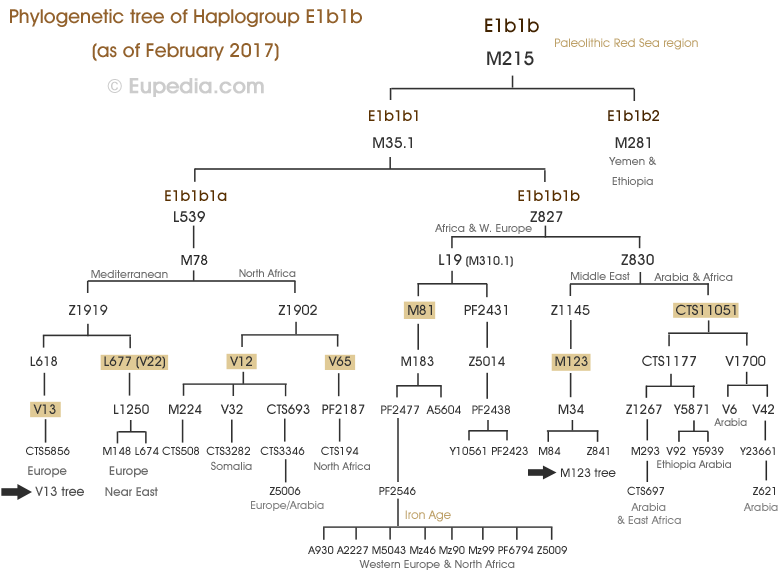
The Cain Connection
When we look at the Y-DNA results of men who have tested, we receive a list of other men in Family Tree DNA’s database whose Y-STRs match the tester, with the total number of differences between the tester’s STRs and the match — that is, how many times more or less the STRs repeat, or how many mutations there have been since the two’s shared common ancestor. Based on this number, the genetic distance, FTDNA offers a statistical estimate of the number of generations back the common ancestor of the two was.
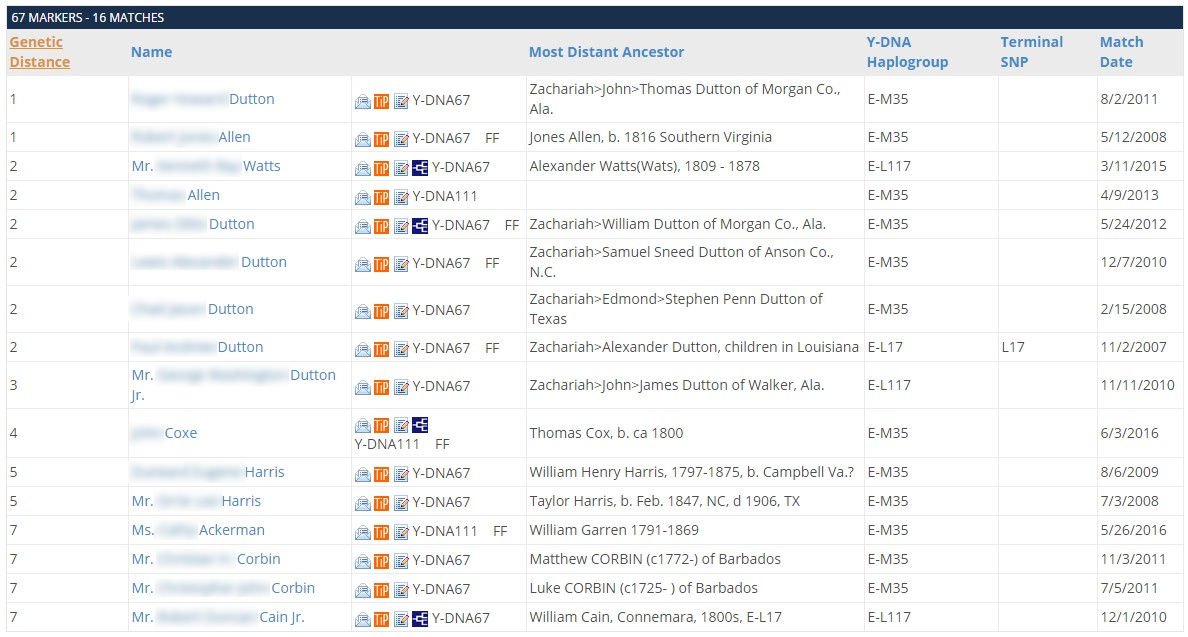
For a number of years, I’ve noticed several matches in the results of our Y-testers with the surname Cain. I remember even someone years ago bringing this to my attention as possibly significant — but because the genetic distance between was so great, seven or more steps, indicating only about a 40 percent chance that we shared a common ancestor within 8 generations (but a 94 percent chance that we shared a common ancestor within the past 16) — I dismissed it. This was too long ago to help in determining who Zachariah Dutton’s father was, likely before even the origin of surnames.
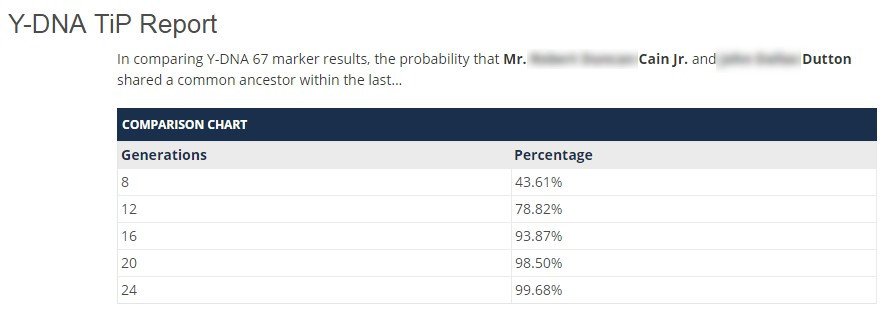
Then in January, when I returned to genealogy and to DNA research with a renewed focus, I happened upon a post from someone on a Dutton message board that upset me. We have always suspected that Zachariah Dutton had a connection to the family of Matthew Dutton, because Zachariah named a son Gerrard, and Matthew Dutton’s father-in-law, the father of his wife Judith O’Caine, was Gerrard O’Caine. For a while, until Y-DNA disproved it, I speculated that Matthew’s son Gerrard Dutton was Zachariah’s father. This post alleged that Gerrard Dutton was actually Judith O’Caine’s brother Gerrard O’Caine Jr., of whom Matthew Dutton became the guardian following Gerrard O’Caine Sr.’s death, Gerrard Jr. having adopted the Dutton name — and Zachariah, his son, “wasn’t a Dutton at all,” but an O’Caine. Most offensively, this person went so far as to rename Zachariah and all of his descendants: not Zachariah Dutton, but Zachariah O’Caine, William O’Caine, Edmond O’Caine, etc.
This was hogwash, of course. Y-DNA had proved that Gerrard Dutton son of Matthew was indeed Matthew’s son, since Mike Dutton claims Gerrard as an ancestor, and he matches the Y-DNA of descendants of Matthew by other lines. It also proved that Zachariah was not the son of Gerrard Dutton. But this nonetheless got me to thinking about this O’Caine allegation. What if there’s something to do this? We do keep seeing these Cains in the Y-DNA results…
What if these Cains we keep matching with were kin to the O’Caines? It kept nagging me to look into testing the Y-DNA of some other descendant of Gerrard O’Caine, but by all appearances, there weren’t any. His will only identified the one son, Gerrard Jr., and the estate proceedings of Gerrard Jr., who died in 1734, don’t appear to name any heirs at all (I have only seen abstracts). The prospects of finding an O’Caine whose DNA to test didn’t seem likely.
But the fact that I was neglecting was that our Dutton Y-testers matching these Cains might have been significant even if they didn’t share an immediate common ancestor. Even if their common ancestor was somewhere far back in the mists of time, even a thousand years ago, he could still help identify the family to which Zachariah Dutton’s father did belong. In the case of the O’Caines, these Cains and Gerrard O’Caine of Charles County, Maryland, could share a common ancestor, even if we cannot find a confirmed descendant of Gerrard O’Caine to test.
Clan O’Caine
Especially with the Irish, whose strong family identification with clans went back more than a thousand years, surnames could certainly have had such an early origin and could persist over such a length of time. Could we possibly know to what clan the family of Gerrard O’Caine belonged?
To know that with certainty is probably not possible without written documentation or without a descendant to test, but we can speculate. I decided to check to see if there was a FTDNA surname project for O’Caines, or if there was any way to compare the Y-DNA of any other O’Caines who have tested.

There is a Cain-Caine Surname Project, which includes the name O’Caine. And the first thing I discovered almost had me falling out of my seat: there is a Clan O’Keane or O’Caine (Ó Catháin Uí Fiachrach) of Connemara and County Mayo Ireland who are Haplogroup E, same as Zachariah Dutton.
More specifically, they are the very specific haplogroup E-L17, a subclade of E-V13 whose population centers in the Balkans of eastern Europe — which is a subclade of the haplogroup E-M78 Zachariah was already confirmed to be a part of. If we could confirm we are E-L17, too, and otherwise come close to matching these Cains in STRs, then there’s a very strong argument that his father could have been an O’Caine.
Before I realized this, I had already ordered a detailed Y-SNP panel on Paul Dutton, to determine our specific subclade of E-M78, mostly out of curiosity. Suddenly receiving these results became urgent, and for the past six weeks or so I’ve waited with bated breath.
Those results came back Saturday night. Zachariah is in fact E-L17.
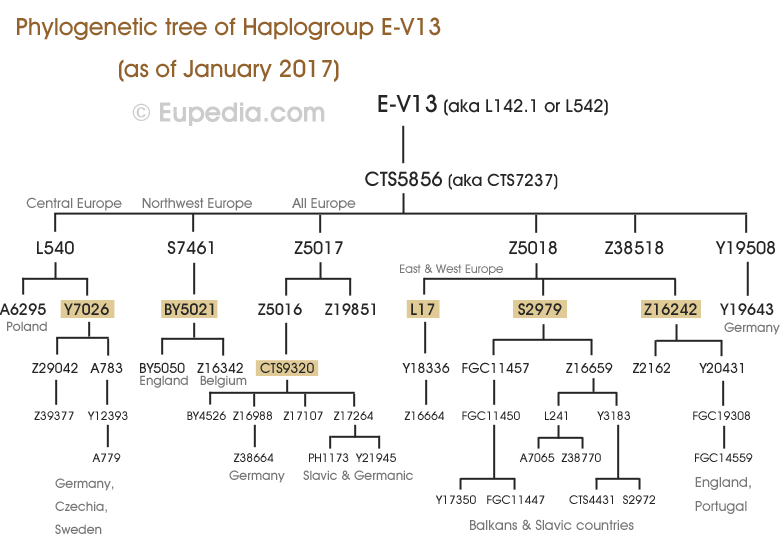
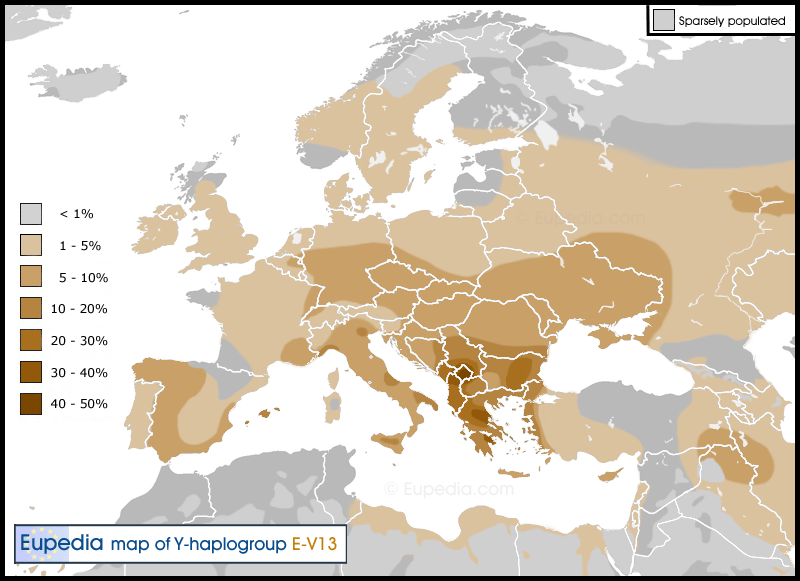
What this means
There is a very strong chance that Zachariah Dutton’s father was an O’Caine, of the same O’Caines as Judith O’Caine wife of Matthew Dutton. There is no proof of this, since we have no proof that Gerrard O’Caine was in fact of this same Clan O’Caine that we are matching. But we do now know that there is a Clan O’Caine of haplogroup E-L17, the same as Zachariah Dutton’s confirmed haplogroup, and that we already match known descendants of this clan in STRs within nearly a genealogical timeframe.
This revelation may answer one question, but it raises numerous others, and it may dash the whole framework of speculation we’ve been making about Zachariah thus far. What O’Caine was Zachariah’s father? We believe Gerrard O’Caine Jr. died in 1734, ending Gerrard O’Caine’s line. We have speculated that Zachariah Dutton was not born until about 1750. Is it possible that he was 16 years or more older than we thought? Technically yes, but it would mean he was over 40 when he served in the American Revolution, over 40 when he married and began having children, over 60 when his youngest child was born, and pushing 100 when he died in 1829. Alternately, we do know that Gerrard O’Caine Sr. apparently had other brothers and nephews who could have fathered Zachariah.
More dire is that this could upset everything we thought we knew about how Zachariah Dutton connects to the Duttons. I have been speculating all along that Zachariah’s mother must have been a Dutton, and he probably was born illegitimate. There is now no necessity of that. The reason for assuming his mother was a Dutton was because we had autosomal matches with other descendants of the Charles County Duttons. But because his father may have been an O’Caine, these matches with the Duttons could be through his father’s line, since all surviving lines of Charles County Duttons are descendants of Matthew Dutton and Judith O’Caine, so have both Dutton and O’Caine DNA. Zachariah could be simply adopted by some Dutton, and not have Dutton blood at all.
So we may have gained a father for Zachariah, but lost a mother. There is no documentary evidence for either, only speculation based on DNA. Zachariah’s mother still could have been a Dutton. But this adds another layer to the difficult questions we were seeking to answer from autosomal DNA. It was already concerning to me that our autosomal matches with Mike Dutton and other Charles County Duttons were relatively few and distant, suggesting that our connection was not so close as I had speculated. This needs to bear some deeper statistical analysis. I need your help: the more of you can test and share your DNA, the more information we can gather to look into these questions.
There may be no way to sort this out from DNA alone. To prove anything, we need documentary proof. We need to look into both the Dutton family and the O’Caine family in records in Charles County, Maryland. Until I can go dig into the records myself, I will continue working on the DNA. This is progress, but it is not easy progress. It is one large step forward into the unknown.

Excellent information. I read it three times. Just to let it sit in my brain to make sure I don’t forget.
Thanks!
I honestly don’t know how you are keeping all this straight but God bless you for hanging in there! If Woody and I can help financially let us know.
Joesph, a quick look at the records still only brings up Gerard O’Caine Jr. as a possibililty. His father Gerard Sr did have 2 brothers John & Derby O’Caine ( if that’s not Irish!) but as far as I can find neither had issue. Gerard’s father John O’Caine had 2 brothers, Richard & Daniel, Richard seems to have died young without marrying and Daniel had 2 daughters. I’ll keep digging
Thanks, Mary Pat. I found a bunch of the records online, thanks to your direction, but I haven’t had time to look at them.
Michael Marshall’s website lists that Derby O’Caine had a son Derby O’Caine who had issue who went across the Potomac to Stafford County, Virginia — but he doesn’t really cite records to support that. There were O’Caines in Stafford County into the nineteenth century, I think I saw. It would be nice to find some descendant of them to test DNA.
I want to think Gerrard Jr. is a possibility — it would certainly make the most sense — but I have a difficult time making Zachariah that old. Apparently all that survives of Gerrard Jr.’s estate is the inventory, which doesn’t name heirs if there were any.
I am so happy for what you have found on the Dutton Family. My ancestors Philip Thomas, Robert Thomas, William Thomas, William Gill Thomas are E-L117 which is within the pages above on Family Tree Program. I can’t find the family of John Thomas who married Susanna Duty after 1812 in Granville Co N C or Susanna or Suckey Thomas 1800 Granville Co N C children of Philip Thomas. Wish I had some help……
Hi Barbara! I remembered seeing some Thomases in the Y-DNA results and corresponding with you at one time. Or perhaps, actually, you sent me an email and I never responded. I’m sorry about that if that’s the case.
I see that our Y-testers are fairly close matches with Gregory A. Thomas, Jay Thomas, and jerry Thomas. According to what they report, not only did your Thomases spend time in Granville County, North Carolina, but they came before that from Charles County, Maryland, same as our Duttons. That raises several questions and several possibilities in my mind.
First, Greg Thomas is estimated to be E-L117, and his ancestor George W. Thomas was apparently born ca. 1780 in Maryland, and settled and died in Washington County, Virginia, never going to Granville County, North Carolina. Your ancestors (the same line as Jerry Thomas; presumably he is the male who tested for you) go back to Robert Thomas, born ca. 1775 in Charles County, Maryland, died in Granville County, North Carolina around 1807, the son of Philip Thomas, born 1747, died 1794, of Charles County, Maryland. Are George W. Thomas and Robert Thomas believed to be brothers? Are there any other known descendant lines of Philip Thomas? I suppose, if we believe those two lines are both from him, then we have no reason to doubt that he is the father and he himself was E-L117 (probably E-L17).
That means that Philip Thomas was born in the same generation as Zachariah Dutton, in the same place, and had apparently the same DNA. They are genetic “brothers.” Are they actually brothers? Cousins? Could Zachariah’s father have been a Thomas? Or, could the father of both be an O’Caine? The thing about Y-DNA is that it’s not supposed to change much from one generation to the next. In all these generations, we have only seen a drift of one STR between our lines. So there’s no indication at all from Y-DNA how recently Zachariah Dutton and Philip Thomas were related.
Have you or any of your people done autosomal testing? If Philip Thomas is related to Zachariah Dutton in any recent way, it ought to show up in autosomal DNA. And oh, dear, I just looked at my great-aunt’s AncestryDNA results, and apparently we do have DNA matches with Maryland Thomases, from the looks of it a good many of them…
Thanks for the tip. This could really complicate things, but it also could really help. 🙂